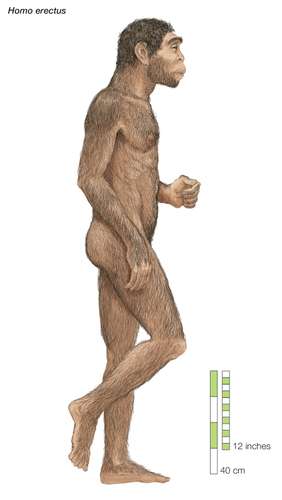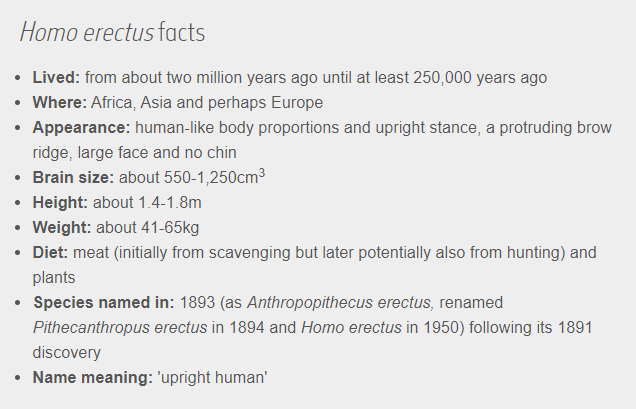Important Facts For Prelims
Homo erectus
- 03 Jan 2020
- 2 min read
Why in News
According to a study published in ‘Nature’, the last known settlement of Homo erectus was situated in Ngandong on the Indonesian island of Java.
- Homo erectus (meaning upright man) is an extinct species of the human genus (Homo), perhaps an ancestor of modern humans (Homo sapiens).
- As per the study, the human ancestors existed on the Indonesian island between 1,08,000 and 1,17,000 years ago.
- While fossil remains from H. erectus are found in Africa, like those of earlier hominins, they have also been identified at fossil sites widely dispersed across Eurasia.
- In particular, H. erectus had a similar range of body sizes to modern humans, and it is the first human ancestor to have similar limb and torso proportions to those seen in modern humans. This suggests it had adapted to walking on two feet in a more open, grassland environment, rather than swinging from tree branch to branch.
Hominin
- Hominin is any member of the zoological “tribe” Hominini (family Hominidae, order Primates), of which only one species exists today—Homo sapiens, or human beings.
- The term is used most often to refer to extinct members of the human lineage, some of which are now quite well known from fossil remains: Homo neanderthalensis (the Neanderthals), Homo erectus, Homo habilis, and various species of Australopithecus.





